Abstract
The intent of the MAClinical Workstation Project is to develop computer workstations for medical students of the sort they will use in future medical practice. The idea is to instill information query habits in the daily clinical activities of these young physicians-in-training. The Georgetown University Medical Center Library spearheads the project in conjunction with the School of Medicine. The library handles technical support, including software development, user training, equipment maintenance, and network installations. The project began in 1988 with nine Macintosh computers; today thirty machines are distributed throughout the Georgetown University Hospital conference rooms, faculty and resident offices, and at four affliated hospitals. The Macintosh computers are connected to the medical center's local area network (LAN) with access to the Integrated Academic Information Management System (IAIMS) and Library Information System (LIS) databases. The MAClinical workstations serve multiple educational purposes in the clinical setting. Primarily, students gain experience in medical informatics by using a variety of software systems installed at the stations: the H&P Writer, a history and physical system written in the C programming language, can be used by students to prepare the admission record on patients they examine; also, students can keep patient records, check findings against a diagnostic system, look up drugs and treatment protocols, develop medical sketches, and find additional information when needed in the medical literature.
Full text
PDF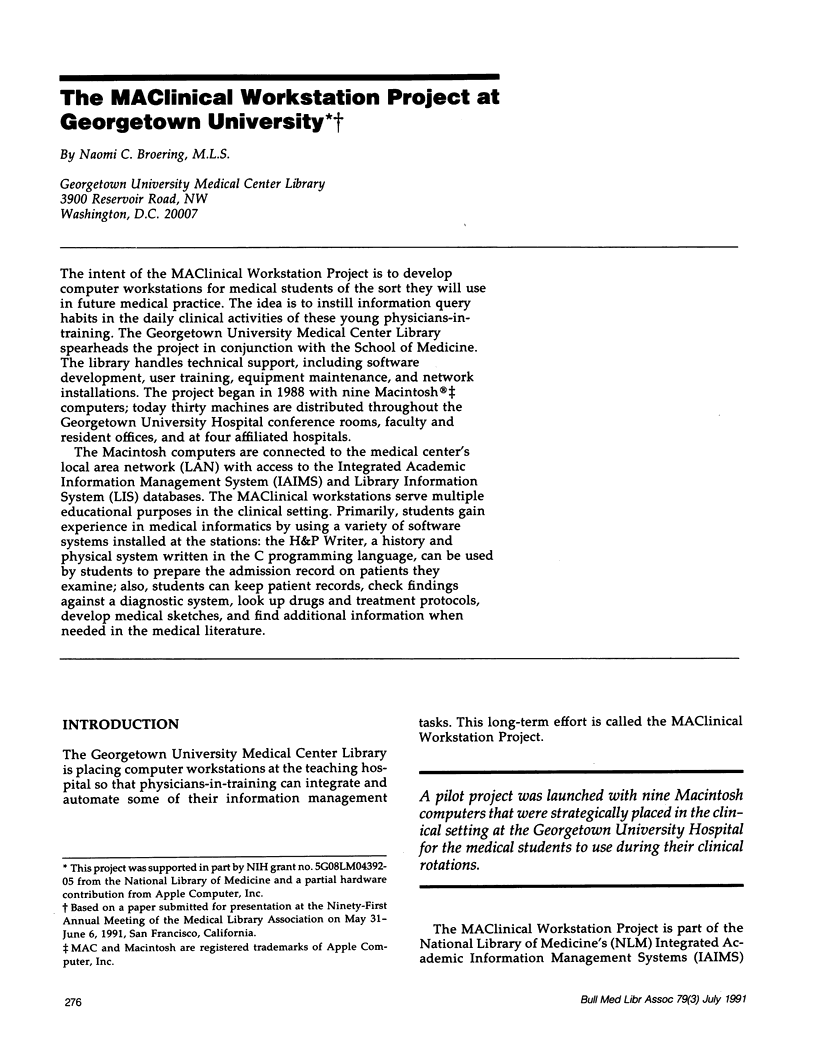
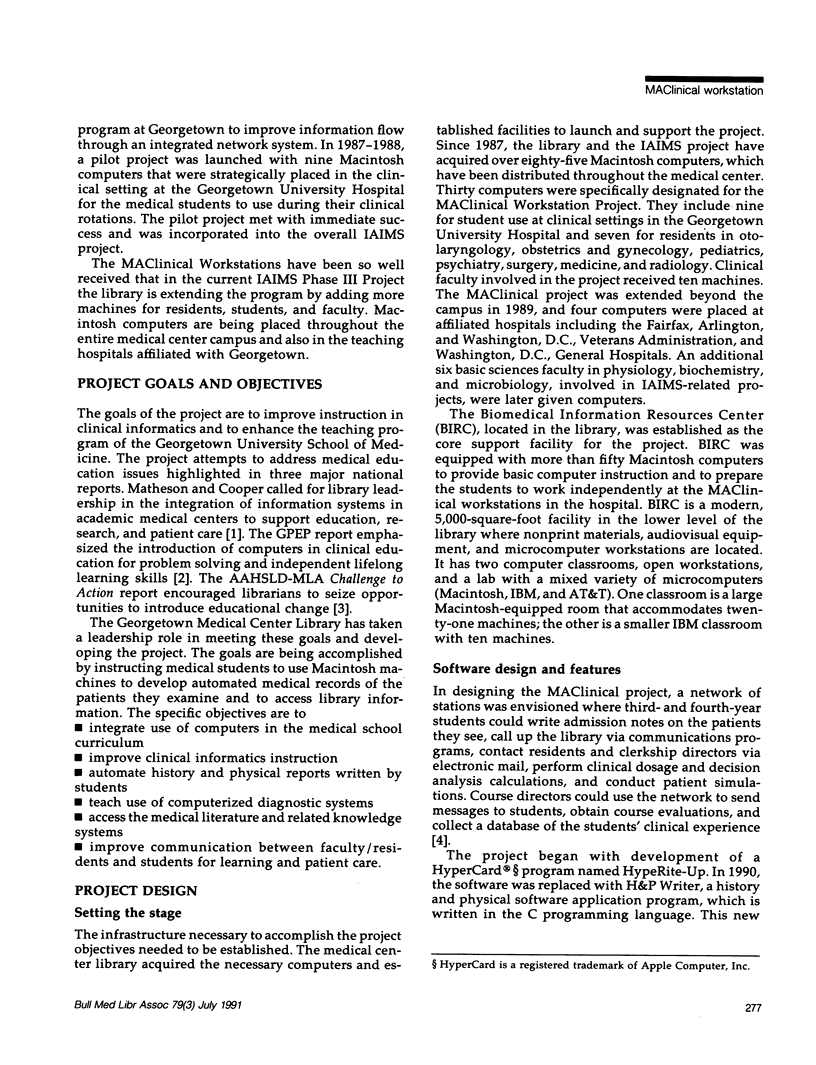
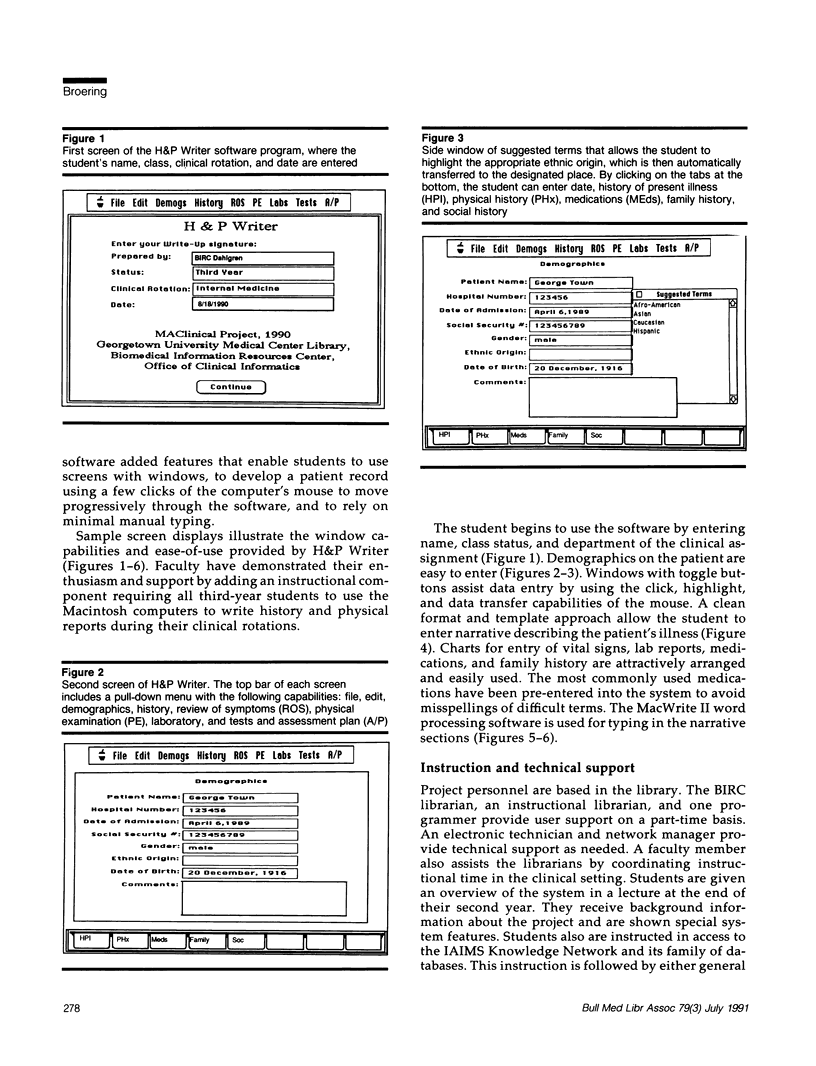
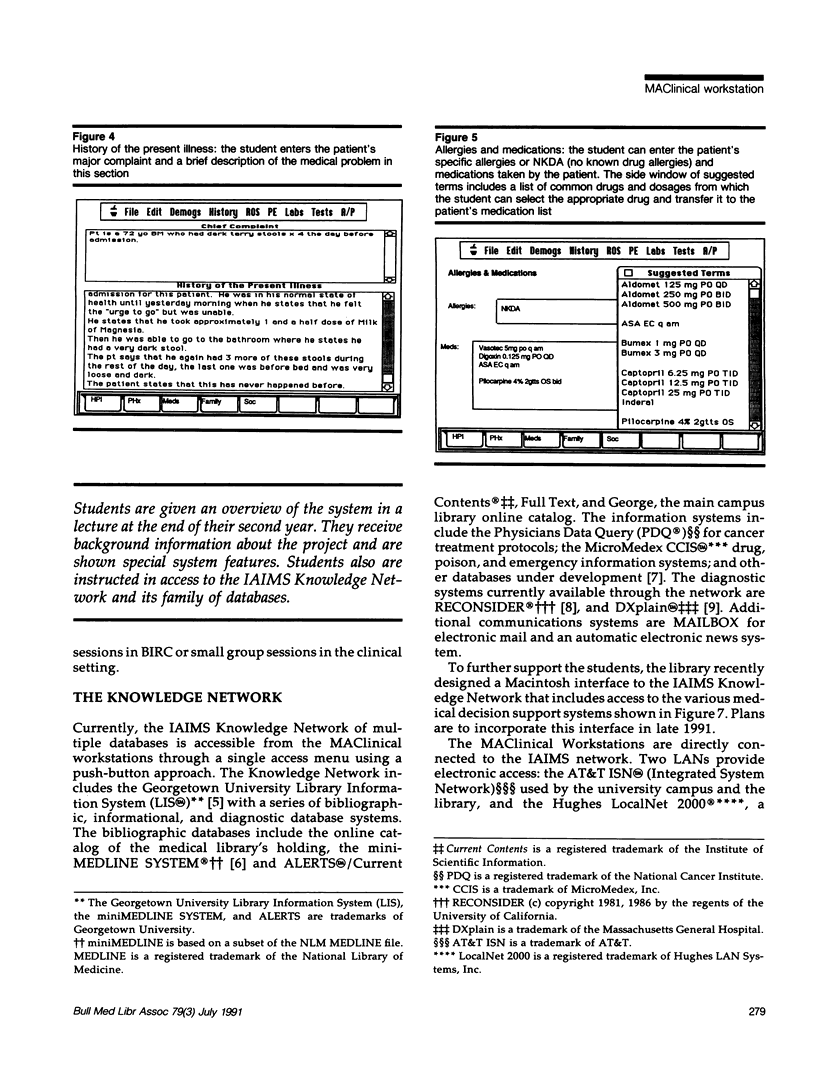
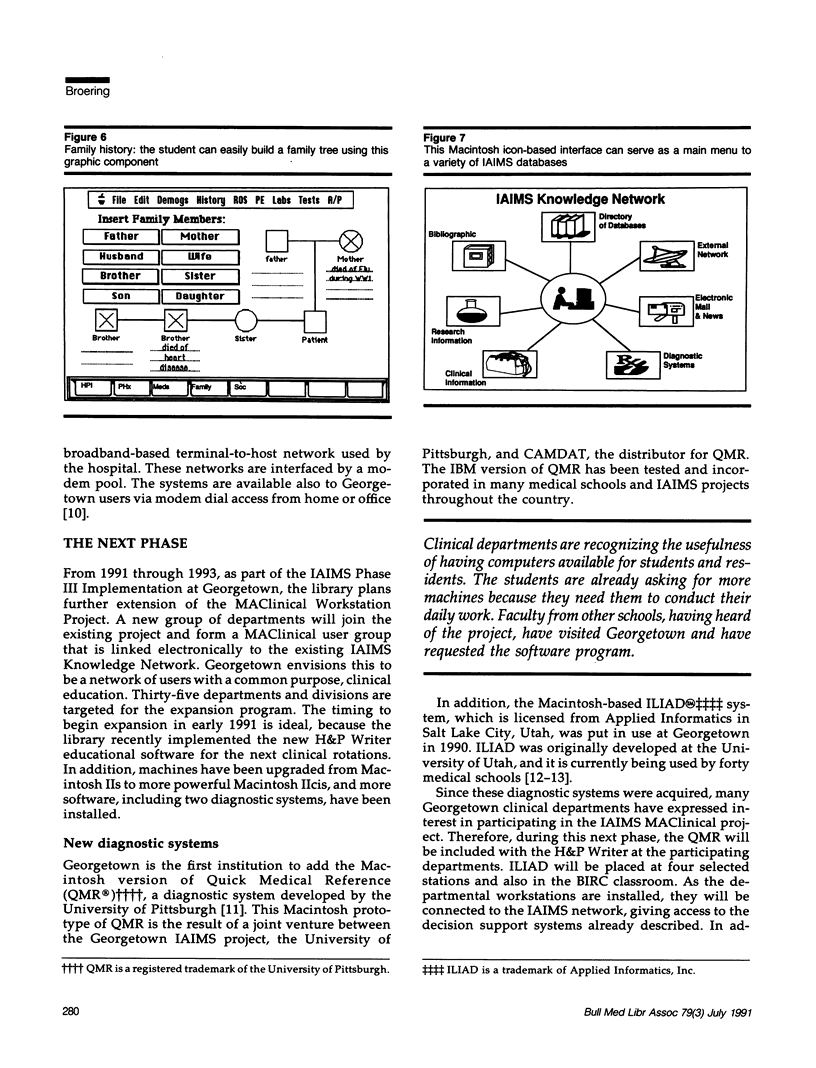
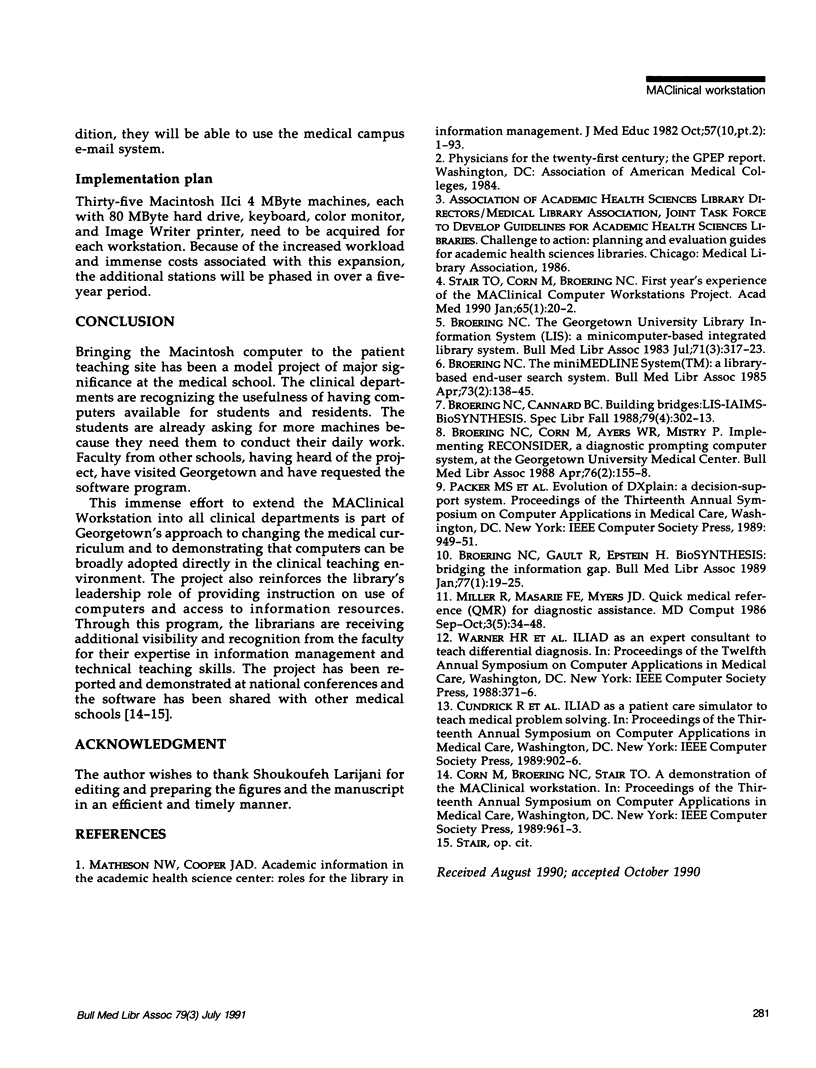
Selected References
These references are in PubMed. This may not be the complete list of references from this article.
- Broering N. C., Cannard B. Building bridges: LIS-IAIMS-BioSYNTHESIS. Spec Libr. 1988 Fall;79(4):302–313. [PubMed] [Google Scholar]
- Broering N. C., Corn M., Ayers W. R., Mistry P. Implementing RECONSIDER, a diagnostic prompting computer system, at the Georgetown University Medical Center. Bull Med Libr Assoc. 1988 Apr;76(2):155–158. [PMC free article] [PubMed] [Google Scholar]
- Broering N. C., Gault H. R., Epstein H. BioSYNTHESIS: bridging the information gap. Bull Med Libr Assoc. 1989 Jan;77(1):19–25. [PMC free article] [PubMed] [Google Scholar]
- Broering N. C. The Georgetown University Library Information System (LIS): a minicomputer-based integrated library system. Bull Med Libr Assoc. 1983 Jul;71(3):317–323. [PMC free article] [PubMed] [Google Scholar]
- Broering N. C. The mini MEDLINE SYSTEM: a library-based end-user search system. Bull Med Libr Assoc. 1985 Apr;73(2):138–145. [PMC free article] [PubMed] [Google Scholar]
- Matheson N. W., Cooper J. A. Academic information in the academic health sciences center. Roles for the library in information management. J Med Educ. 1982 Oct;57(10 Pt 2):1–93. doi: 10.1097/00001888-198210000-00001. [DOI] [PubMed] [Google Scholar]
- Miller R., Masarie F. E., Myers J. D. Quick medical reference (QMR) for diagnostic assistance. MD Comput. 1986 Sep-Oct;3(5):34–48. [PubMed] [Google Scholar]
- Stair T. O., Corn M., Broering N. C. First year's experience of the MAClinical Computer Workstations Project. Acad Med. 1990 Jan;65(1):20–22. [PubMed] [Google Scholar]


